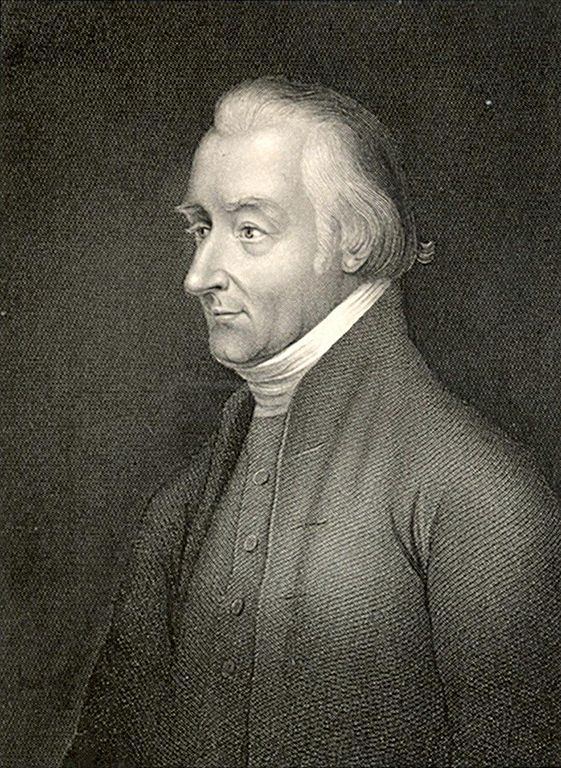Nationality American Role Writer Name Lindley Murray | Known for English Grammar Occupation Grammarian | |
 | ||
Died February 16, 1826, Holgate, North Yorkshire, United Kingdom Parents Mary Lindley Murray, Robert Murray Books English grammar - adapted t, English Grammar: Adapted t, Murray's English Grammar, Abridgment Of Murray's English G, The English reader | ||
Lindley Murray (27 March 1745 – 16 February 1826), was an American Quaker who moved to England and became a writer and grammarian.
Contents

Early life
Lindley Murray was born at Harper Tavern, Pennsylvania, on 27 March 1745. His father, Robert Murray, a member of an old Quaker family, was one of the leading New York merchants. Murray was the eldest of twelve children, all of whom he survived, although he was puny and delicate in childhood. When six years old, he was sent to school in Philadelphia, but soon left to accompany his parents to North Carolina, where they lived until 1753. They then moved to New York, where Murray was sent to a good school, but proved a 'heedless boy'. Contrary to his inclinations, he was placed when only fourteen in his father's counting-house. In spite of endeavors to foster in him the commercial spirit, the lad's interests were mainly concentrated in science and literature. Collecting his books, he escaped to Burlington, New Jersey, entered a boarding-school, and started to study French. His retreat was discovered, he was brought back to New York, and allowed a private tutor. His father still desired him to apply himself to commerce, but he stated arguments in favor of a literary profession so ably in writing that his father's lawyer advised him to let the lad study law.
Four years later Murray was called to the bar, and practiced as counsel and attorney in the province of New York. At the age of twenty-two he married, and in 1770 came to England, whither his father had preceded him, but Lindley returned in 1771 to New York. Here his practice became both large and lucrative, in spite of his conscientious care to 'discourage litigation, and to recommend a peaceable settlement of differences.' On the outbreak of hostilities in America, Murray went with his wife to Long Island, where four years were spent in fishing, sailing, and shooting. On the declaration of independence he returned to New York, and was so successful that he retired in 1783 to a beautiful place on the Hudson.
Later life
As Murray's health was failing, he decided to try the English climate. In 1784, he left America and never returned. The remainder of his life was spent in literary pursuits at Holgate, near York. For the last sixteen years of his life, Murray's physical condition, likely the result of Post-Polio Syndrome, confined him to his house. Charles Monaghan's 1998 biography, The Murrays of Murray Hill, long considered a standard work, has been recently (2011) succeeded by Fens-de Zeeuw's authoritative work on Murray's life and language use, in which several earlier misconceptions are set straight.
His library became noted for its theological and philological treasures. He studied botany, and his garden was said to exceed in variety the Royal Gardens at Kew. The summer house in which his grammars were composed still remains. Murray's first published work, The Power of Religion on the Mind, York, 1787, 20th edition 1842, was twice translated into French. To the 8th edition (1795) was added 'Extracts from the Writings of divers Eminent Men representing the Evils of Stage Plays, &c.,' published separately 1789 and 1799.
His attention was then drawn to the want of suitable lesson-books for a Friends' school for girls in York, and in 1795 he published his English Grammar. The manuscript petition from the teachers requesting him to prepare it has been preserved. The work became rapidly popular; it went through nearly fifty editions, was edited, abridged, simplified, and enlarged in England and America, and for a long time was used in schools to the exclusion of all other grammar-books. See History of English grammars.
In 1816, an edition corrected by the author was issued in 2 vols. 8vo. An 'Abridgment' of this version by Murray, issued two years later, went through more than 120 editions of ten thousand each. It was printed at the New England Institution for the Blind in embossed characters, Boston, 1835, and translated into Marathi, Bombay, 1837. English Exercises followed (1797), with A Key (27th edit. London, 1847), and both works were in large demand. Murray's English Reader, Sequel, and Introduction, issued respectively 1799, 1800, and 1801 (31st edit. 1836), were equally successful, as well as the Lecteur Francais, 1802, and Introduction to the Lecteur Francais, 1807. An English Spelling Book, 1804, reached forty-four editions, and was translated into Spanish (Cadiz, 1841). Of a First Book for Children the 150th thousand, with portrait and woodcuts, was issued in 1859.
The sales of the Grammar, Exercises, Key, and Lecteur Francais brought Murray in each case £700, and he devoted the whole sum to philanthropic objects. The copyright of his religious works he presented to his publishers. By his will, a sum of money for the purchase and distribution of religious literature was vested in trustees in America. When the Retreat for the Insane was founded at York by William Tuke in 1792, Murray did his utmost to second Tuke's efforts to introduce a humane system of treatment.
He was a recorded minister of the York monthly meeting for eleven years, when 'his voice failed and he asked permission to resign. For the last sixteen years of his life he never left the house. He died on 16 January 1826, aged 80.
Family
Murray married, on 22 June 1767, Hannah Dobson, who died 25 Septembter 1834. They had no children.
